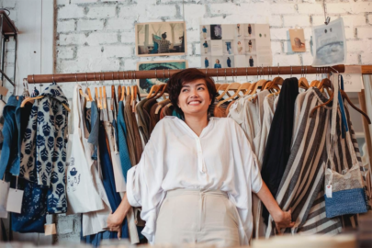Sustainable wardrobe curation? How to achieve this, begins with the end in mind.
There’s a growing awareness of the damage our clothing choices are making to our planet. It’s never too late to start taking control of your wardrobe and becoming well informed about what it takes to curate a wardrobe that works for you and the environment.
Here are a few simple steps you can bear in mind when looking at your existing wardrobe and for future buying.
Step One – Begin with the end in mind.
The life of a garment in your wardrobe will come to an end and with wise choices you will happily send it off to another life or another world without feeling guilty and with minimal impact to our planet.
Some brands are taking new and innovative approaches to what happens to their garments post life in your wardrobe. It is worth finding out what the store or brand label approach is to garments you purchase because we need to be responsible for where our garments end up and knowing what support is out there is extremely helpful.

Step Two – Buy less! Really, think twice about what you need.
Its extraordinary that stores throw away unsold clothing, but consumerism is rife in the clothing industry, and it seems they can take this sort of hit on unsold garments. Buy less and contribute to the reduction in overstocked stores and excessive consumerism in the clothing industry.
Step Three – Host a clothes swap party!
Hosting a clothes swap party is a fun, productive way of getting together with friends while doing good for our planet.
Clothing swaps are great for conversation and encouraging a group of people to think differently about their clothes.
When collating what people bring put them in fabric groups. It’s important to know what fabric garments are made of and it’s a great starting point. There’s so much to know about fabrics and if you would like more information on this contact me!
Think about where you want to host the party. Will it be a casual party at your home with friends? Do you want to make it a fundraiser? Do you have all the necessary items like tables, mirrors clothes racks? Will people pay per item or buy tokens or maybe it will be a simple free swap party. Whatever you choose to do it’s great to keep garments in circulation! Take photos and send them to me.
I would love to share your story!

Step Four – Recycle or Op Shops
There are a lot of good reasons to donate to Recycle Shops and to buy from them; top of my list is of course keeping clothing out of landfill. A staggering 90% of Australia’s textile waste currently ends up in landfill. We need to keep working on this aspect of our approach to clothing and do all we can to reduce this.
Instead of it being your garment’s end of life, donate it to your local op shop where proceeds are likely to go to a worthy cause.
Sewing groups and individuals also look for recycled garments and textiles for amazing initiatives like the ones that provided sewn products for wildlife after Australia’s terrible bush fires. Knowing that you have helped during times of need is a great feeling that makes it worth learning some very simple sewing skills.

Step Five – On that note let’s chat about mending!
Mending is no longer something our grandmothers did, it’s now gaining in popularity as people spend more time at home and are starting to appreciate ‘slow’ craft skills like taking up embroidery.
Get a group of your friends together in person, if possible, or online and talk about what mending project you are working on and bounce ideas off each other.
Start looking at creative ways to mend your clothes and how combining a beautiful jacket with patched jeans (by you) works well together. Sometimes you need that understated chic. Patches can be done by hand or with a machine. Get some denim scraps and start experimenting.
Look up boro or wabi sabi. The Japanese embrace the art of imperfection, finding beauty in it, which is something we can all learn from. Invisible mending has now become visible mending!

Step 6 – Alterations or SIY (sew it yourself)
One of the secrets to a great wardrobe is garment fit. As large to medium-scale manufacturers work to standard measurements it’s often difficult to find clothes that fit well, especially if they are not made in a stretch fabric. There are of course amazing alteration services available to help you with this problem and I think everyone needs to know a good alterations specialist to help you tailor garments to your needs. This does not only apply to new garments, but to existing one in your wardrobe as well. Sometimes all it takes is to let out seams, unpick darts or adjust the length to make that garment keep it’s place in your heart and wardrobe.
Alterations are another skill you can build on yourself. My tape measure and seam ripper/unpicker are always close to hand! Start with a simple project like changing the buttons on a garment that needs updating or a simple hem that can be turned up by machine. Taking in a side seam can also be straight forward and dramatically change the look and feel of your garment. Next head down to your local recycle shop find a garment in a fabric you like and assess how you can alter it to make it your own. Op shop alterations are a great way to improve your sewing skills, without spending a fortune, and get creative.
Set up a space for your machine and enjoy learning a new hobby. Before you know it you will get the feel of working with different fabrics and learn the very fulfilling art of cutting out and sewing your own garments from start to finish – all while working towards saving our planet. Sewing helps!
But start small, headband small, until you are confident to go to the next step.

I really appreciate you taking time to read this article and if there is anything I can help you with please contact me.

